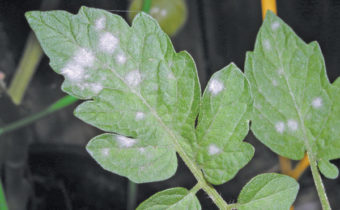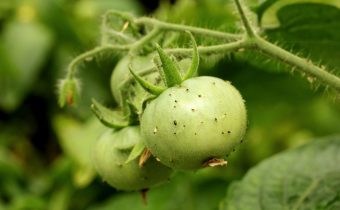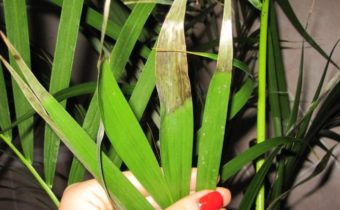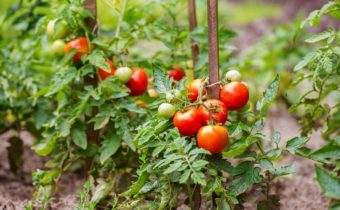What can be done so that there are no yellow spots on the leaves of tomatoes
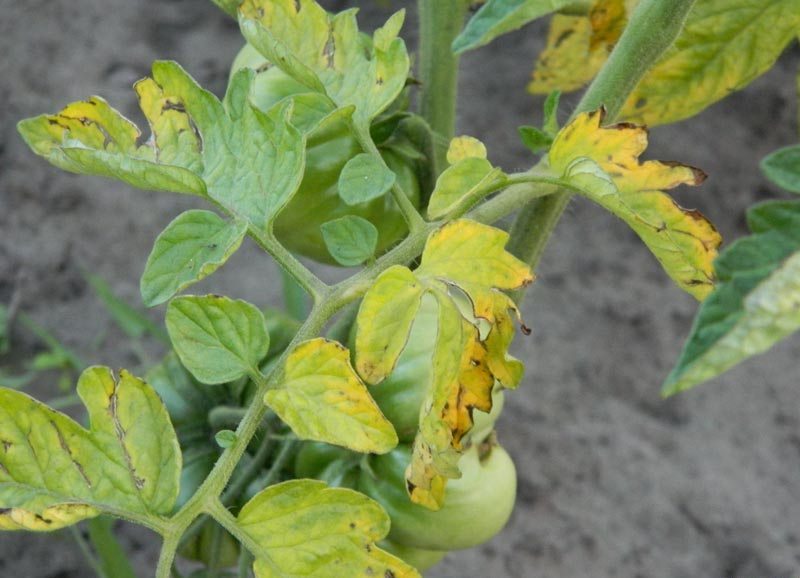
The appearance of yellow spots does not frighten many gardeners, but in vain. As a rule, this is a sign of the development of a dangerous disease or an indication of improper care for seedlings. But before you start dealing with the problem, you need to find out why there are yellow spots on the leaves of tomatoes and what to do about it?
Causes of
The reasons why there are yellow spots on the leaves of tomatoes are many. These include diseases, lack of micro and macro, root damage, weather conditions, poor soil.
Diseases
Diseases are recognized as the most common cause of this problem. These include:
| Fungal | late blight, cladosporia, powdery mildew |
| Viral | leaf curl, mosaic |
| Bacterial | bacterial cancer |
Lack of trace elements and vitamins
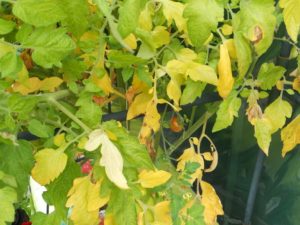
Leaf color depends on proper and timely fertilization. For example, with a lack of copper, the lower leaves begin to turn yellow, and with a lack of potassium, the upper leaves take the main blow. With a shortage of nitrogen leaves completely covered with a yellow-green speck. The main thing is not to bring to excess, which will lead to a deterioration of the seedlings, and at elevated temperatures and at all to the death of tomatoes.
Incorrectly picked up ground
Tomatoes are a demanding crop, and before planting it is necessary to determine the acidity of the soil. The level should not be lower than 6, and the potassium content should be at least 3%.
Excessive solar activity
The sun causes the development of yellow spots on young seedlings quite often. This does not indicate the development of the disease, just a sapling is not fully formed and so far can not fully defend against weather conditions.
Root damage
It usually occurs due to improper handling or watering the beds.
The most common root damage is considered when transplanting into open ground or loosening.
Signs and symptoms
Symptoms are manifestations characteristic of many diseases. Their manifestation does not directly indicate the disease, and the symptoms directly indicate the presence of one or another disease. For example:
| Cause | Signs of | Symptoms |
| Late blight | patches of yellow and brown; wilting of the stem and draining of flowers | in the rain the leaves are covered with an oil film; fruits are covered with brown spots; stain deformation |
| Cladosporiosis | spotting on yellow leaves; leaf rolling | fruits do not have time to ripen; covered with mold spots; fall rotten |
| Mealy dew | inflorescences are painted black; worsening condition of tomato bushes; fruit loosening; yellowish spots appear on the leaves | grayish-white bloom on seedlings; formation of liquid on the leaves due to the activation of fungi |
| Leaf curl | slow growth and development of the bush; the presence of yellowish spots on the leaves, formed during the transition from one color to another | change the color of the bush, gradually acquiring a light green color; the top of the seedling becomes curly |
| Mosaic | leaf deformation and twisting; tissue necrosis | bleaching of culture tissues with the formation of characteristic yellowish spots; the leaf looks like a fern |
| Bacterial cancer | wilting seedlings; plant drying, without falling leaves | draining the leaves, which, as the vegetative organ is damaged, stains it in dark yellow spots; ulceration |
| Incorrectly picked up ground | deterioration and fall of the bush | the leaves start to turn yellow from the bottom of the leaf |
| Root damage | there are no signs as such | yellowing of the lower leaves and their fall; rejection of water for irrigation |
Treatment
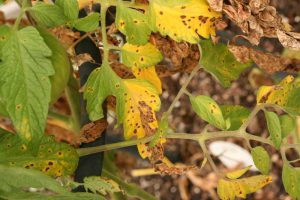
It is not possible to treat for bacterial cancer, powdery mildew, late blight of leaf mosaic, curl and cladosporia. These diseases affect the tomato crop so quickly that no chemical can stop the development of the disease. The only correct solution would be to remove the infected bushes from the garden, burning them. Do not forget to treat the soil with chemicals (for example, phytosporin) or even change the soil layer.
In the event that the appearance of yellow spots is caused by an excess of nutrients, such as nitrogen, in this case, the application of phosphorus into the soil and abundant watering will help the seedlings to digest the fertilizer.
Watering should be carried out strictly under the root, early in the morning or late in the evening. So, you reduce the risk of developing fungal infections.
With a lack of potassium, add potassium sulphide to the soil or potassium monophosphate. With a lack of copper, irrigate with copper sulfate. If not enough calcium - calcium nitrate.
If the yellow spots were formed due to the sun, then move the seedlings with seedlings to a more protected place and water well. Adult bushes are unlikely to be affected by the sun.
In case of improperly selected soil, in case of a high level of acidity, add fluff lime to the soil (as a rule, one bucket is enough for 1 square meter of soil). Make it necessary only in the fall.
If the roots are damaged, try transplanting the damaged seedling and pay attention to its roots. Damaged - often exposed to various diseases. Treat with insecticides for safety.
Prevention
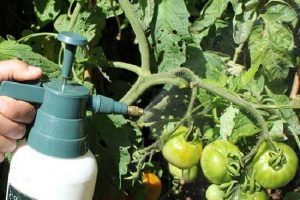
The best prevention of disease is monthly treatment with chemicals, insecticides, fungicides or biological agents. For example, Aktara can cope with fungi, with tomato viral diseases, treatment with malathion solution, and with bacterial damage, with carbothion.
Observe the timing of fertilizer. They can be found in the instructions for a particular mineral complex. When flowering it does not need to focus - fertilize 1 time in 2 weeks.
In the fall, take care of the soil. In the gardening shop you can buy a litmus test and measure the level of acidity. At an elevated level, it is necessary to reduce it until the end of autumn, since a decrease in early spring can lead to the death of seedlings.
Do not want to damage the roots? Then spend hilling and loosening after watering and slightly deepen hoes and rakes.
Tips
- Water tomatoes in a timely manner - no more than 2 times a week. Do not forget about cleaning beds from weeds. Carefully inspect the seedlings, raise the leaves - so you can at the early stage to detect pests and the development of diseases and prevent them, preserving the harvest.
- Treat both chemicals and biological fertilizers in a special protective suit and using rubber gloves. Take care that no children or animals are near. In rainy weather and on a sunny day, do not carry out the treatment, there is a high risk of reducing the effectiveness of drugs and the development of fungal infections.
- Follow the rules of crop rotation and do not use the soil previously infected or previously used for other purposes. It is best to order it from suppliers or buy it in a store if it is a small scale.Do not forget about the daily ventilation of the greenhouse, because the ideal temperature for cultivation is +25 degrees, and high humidity causes the development of diseases. When forming flowers and fruits, do not process with any substances.
It is better to prevent problems than to cure, and by following these tips, you can not only find out the cause of the appearance of yellow spots, but also start prevention in a timely manner, keeping the entire crop healthy and tasty.



 (3 ratings, average: 3,67 from 5)
(3 ratings, average: 3,67 from 5)